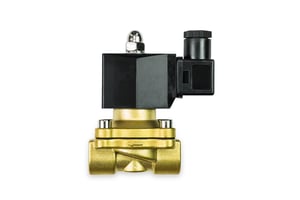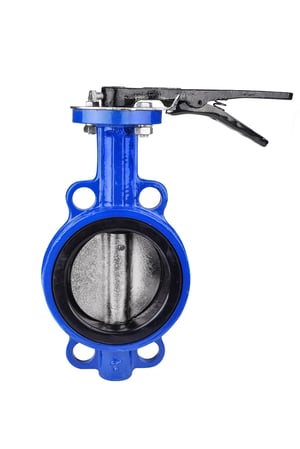 Many times, the choice of valve type – ball, butterfly, gate, angle seat, or solenoid – rests on installed base or tradition. For example, a water treatment facility tends to use butterfly and gate valves for cost effective throughput. Some applications fall into a gray area where multiple valve types could fulfill the application’s requirements. In these cases, there is not always a right answer or a clear preference for industrial process valve selection.
Many times, the choice of valve type – ball, butterfly, gate, angle seat, or solenoid – rests on installed base or tradition. For example, a water treatment facility tends to use butterfly and gate valves for cost effective throughput. Some applications fall into a gray area where multiple valve types could fulfill the application’s requirements. In these cases, there is not always a right answer or a clear preference for industrial process valve selection.
Below are five tips and tricks to help determine which process valve is most suitable based on a variety of parameters. The comparison between valve types is intended to be a guideline for most general-purpose applications and may not apply to more unique or extreme conditions. Tip 1: Butterfly and gate valves are typically the best fit for lines greater than 2 in.
Tip 1: Butterfly and gate valves are typically the best fit for lines greater than 2 in.
The principal reason to consider butterfly and gate valves for pipes 2 in. and larger is because these valves scale up to larger sizes more cost effective than ball, angle seat, and solenoid valves. Butterfly valves have the best price of the two, and they are the easiest and most cost-effective to automate. Gate valves, on the other hand, are best for slurry, sludge, high particulate media and proportional control valve applications. Figure 1 shows how the two standard industrial valves compare in relative terms to important considerations for automated applications. A single star rating has the lowest relative value in the category while a three-star rating offers the highest.
Tip 2: For high pressure and high temperature, ball and angle seat valves have a clear advantage
As pressure and/or temperature increases, ball and angle seat valves provide an overall advantage due to the standardization on highly-resilient materials like stainless steel housings and polytetrafluoroethylene (PTFE) seats. PTFE is a plastic said to have a low coefficient of friction and good insulating properties. However, the larger an angle seat valve becomes, the lower its pressure rating, losing some of its advantage in this category. See Figure 2.
Tip 3: Angle seat and solenoid valves are tops in terms of number of cycles For high-cycle-rate applications, like filling machines, start by exploring angle seat valves for pneumatic automation and solenoid valves for electric automation. These have the highest lifecycle ratings, while ball and butterfly valves have the lowest. In applications where the valve may only open a few times per day, the number of life cycles are less of priority, and ball and butterfly valves can be still a good choice.
For high-cycle-rate applications, like filling machines, start by exploring angle seat valves for pneumatic automation and solenoid valves for electric automation. These have the highest lifecycle ratings, while ball and butterfly valves have the lowest. In applications where the valve may only open a few times per day, the number of life cycles are less of priority, and ball and butterfly valves can be still a good choice.
Tip 4: For small footprint, look at angle seat and solenoid valves
When size or weight is an issue – skid applications, for example ‒ angle seat and solenoid valves offer an advantage for automated solutions due to their compact nature with integrated actuating mechanisms.
Tip 5: The fastest valve on the block is the angle seat
The design and internal actuation make the angle seat the best selection for fast open and close rates. These valves often are found in high-speed filling applications to provide precise and accurate volumes.
To learn more about how Radwell can assist with your process valve needs
For a behind-the-scenes view of Radwell

View the original article and related content on Control Engineering
https://www.controleng.com/articles/five-tips-for-selecting-the-correct-process-valve-for-the-job/
https://stream.cfetechnology.com/contentstream/tracking/?fdid=9964&uid=505796&cp=36&pub=45

